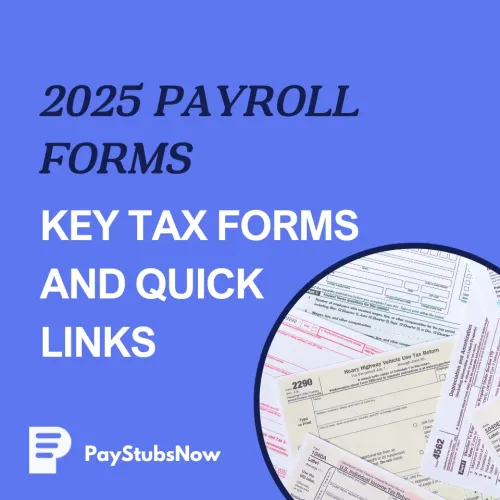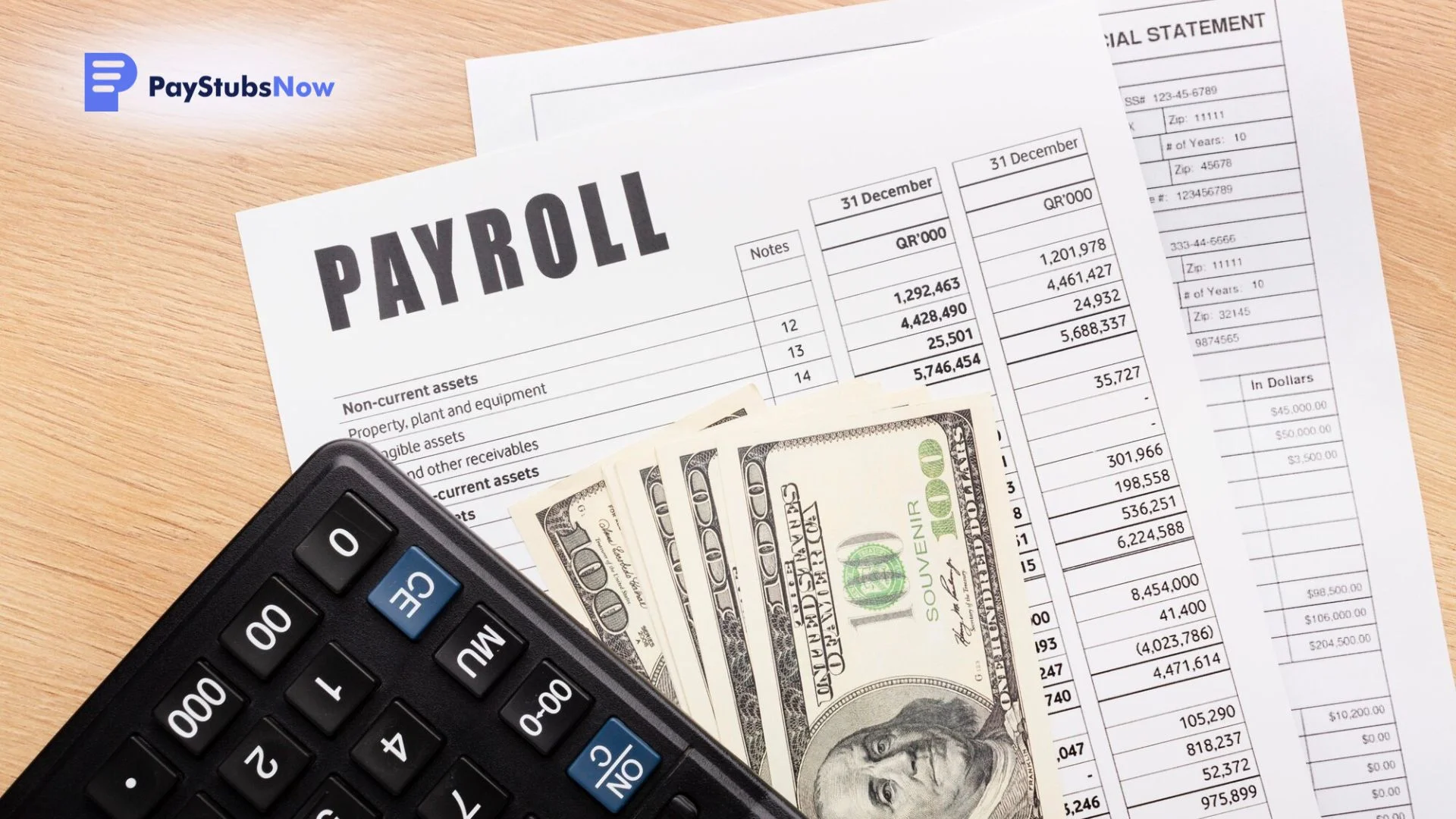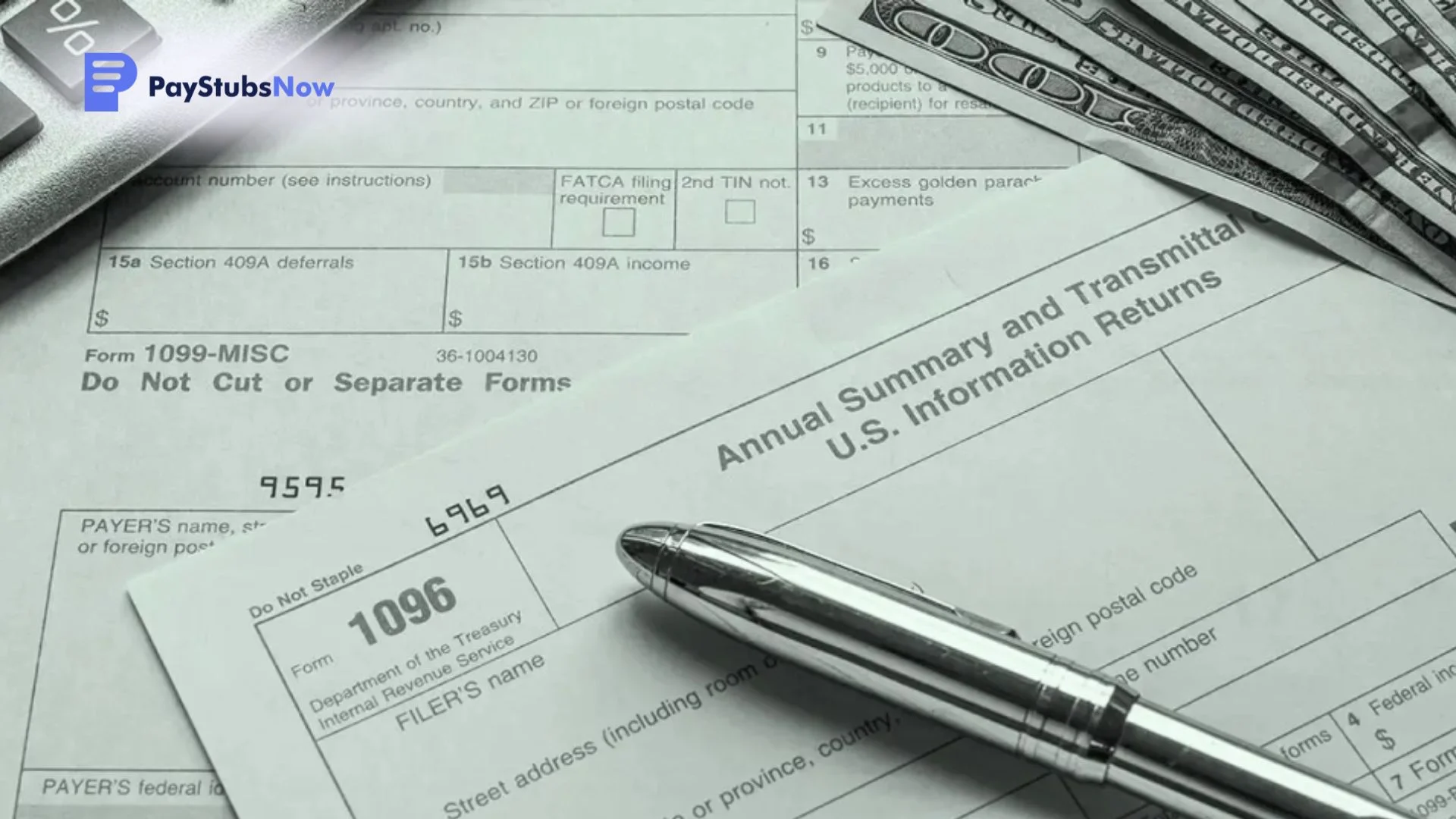


In 2025, employers are gearing up for another cycle of tax-related tasks and responsibilities. With new regulations and requirements always on the horizon, staying informed about the essential payroll forms needed to keep your business compliant is critical. Understanding the various federal and state-specific forms, such as the W-2, W-4, and others, is key to managing your payroll smoothly.
In this blog, we'll review the vital payroll tax forms required for 2025, offering direct links for easy access and empowering you to meet all filing deadlines. We'll alsospotlight Paystubsnow, a convenient platform designed to streamline the creation of payroll records and pay stubs, ensuring accuracy and simplicity.
Payroll forms are essential documents that record earnings and tax information of employed individuals. They ensure lawful compliance, precise tax calculations, and accurate employee compensation reporting at the federal and state levels. These forms are about legal adherence and help mitigate penalties, bolster employee trust, and support the smooth functioning of business operations.

Navigating an annual tax form can seem challenging, but understanding all the forms is crucial. Let's examine the essential forms you'll need to manage employee taxes smoothly in 2025.
A W2 Form is critical to payroll and is submitted annually by employers to an employee for their services. It reports total wages paid to employees and taxes withheld during the year.
Form W-3 summarizes all of an employer's W-2 forms. Its primary function is to provide the wages and withholdings reported on the W-2s.
This form determines the federal income tax withholding from an employee's paycheck and assists employees in calculating the correct amount of federal tax to be deducted from their earnings. Employees generally submit this form during their onboarding process .
This is an annual employer requirement. The Federal Unemployment Tax Act aims to report and pay unemployment taxes that compensate workers who have lost their jobs.
This is an essential document for employers. Reports federal income tax withheld and employer/employee portions of Social Security and Medicare taxes.
Filing Requirements: Required quarterly for most employers.
Due Dates for 2025:
Q1: April 30
Q2: July 31
Q3: October 31
Q4: January 31, 2026
Employers use this tax form to report wages paid to agricultural workers during the year. It also reports federal tax withholdings and FICA taxes for agricultural workers.
Form 944 is designed for small employers to report yearly federal income taxes, social security, and Medicare taxes. It minimizes the burden for employers with an annual tax liability of $1,000 or less. Such employers can file these forms annually instead of filing them as quarterly forms.
 Independent contractors and freelancers require different tax documentation than full-time employees. Below are the key forms you’ll need to manage their compensation.
Independent contractors and freelancers require different tax documentation than full-time employees. Below are the key forms you’ll need to manage their compensation.
This is necessary as a Request for a Taxpayer Identification Number (TIN) and Certification. It collects taxpayer information from freelancers and contractors for 1099 reporting.
Form 1099 is a series of tax documents that self-employed or freelancers use to report income other than salaries, wages, and tips to the IRS. Report payments of $600 or more to independent contractors.
Form 1099-MISC is used to report miscellaneous compensation, such as rent, prizes, awards, medical and healthcare payments, and payments to an attorney. This form reports payments not covered under 1099-NEC.
Form SS-8 helps determine if a worker is an independent contractor or employee.
Employers that provide health insurance must submit the forms below to the IRS and employees confirming coverage.
This illustrates that a worker has minimum essential health coverage. The primary goal is to report certain information to the IRS and taxpayers about individuals covered by minimum essential coverage.
Form 1094-B is the transmittal form that must be filed with Form 1095-B. It accompanies Form 1095-B as a summary transmittal to the IRS.
 These additional forms below serve compliance and documentation purposes, from verifying employment eligibility to reporting tip income.
These additional forms below serve compliance and documentation purposes, from verifying employment eligibility to reporting tip income.
Form I-9 is a mandatory document for employers. It aims to verify the identity and employment authorization of individuals hired for employment in the United States, both citizens and non-citizens.
Employers operating food or beverage establishments use Form 8027. Reports the tip income and allocated tips for food and beverage businesses with over 10 employees.
Form 1096 is an IRS tax form used in the United States to summarize information returns being sent to the IRS. Used to summarize paper-filed 1099 forms submitted to the IRS.
While we've covered the most common federal payroll forms, remember that each state has tax forms that must be filed. Here are some you might come across, depending on your business's location:
 Mastering payroll form handling ensures compliance and accuracy throughout the tax year. Here are some best practices to refine your payroll processes.
Mastering payroll form handling ensures compliance and accuracy throughout the tax year. Here are some best practices to refine your payroll processes.
Missing a payroll form deadline can lead to penalties and compliance issues. Mark important dates on your calendar, like quarterly 941 filings or annual W-2 submissions. Set automated reminders or use payroll software to track due dates.
Maintaining organized payroll records is essential for audits, tax filings, and employee disputes—store digital copies of pay stubs , tax forms, and timesheets in a secure, centralized system. Categorize documents by employee and year for quick access.
Always double-check whether a worker is classified as an employee or an independent contractor . Misclassification can trigger serious tax liabilities and legal issues. Confirm Social Security numbers, EINs, and names before submitting tax forms.
Electronic filing is faster, more secure, and less prone to errors than manual filing. The IRS encourages businesses to e-file forms like W-2, 941, and 1099-NEC, especially when submitting in bulk. E-filing helps meet deadlines more easily and provides instant confirmation.
With Paystubsnow, you can automatically generate accurate pay stubs, including taxes, deductions, and benefits. Our platform minimizes human error and ensures every document aligns with current federal and state payroll regulations, keeping your business audit-ready and error-free with every pay cycle.
Managing payroll tax forms for 2025 means staying on top of deadlines, knowing which forms apply to your business, and ensuring every detail is accurate. From W-2s and 1099s to Forms 941, 940, and more, even small errors can lead to penalties or compliance issues.
Paystubsnow helps simplify this process. Our platform allows you to generate compliant, accurate payroll documents, including pay stubs and income records, so you’re always prepared for tax season. Whether you're handling employee compensation or independent contractor payments, Paystubsnow keeps your records organized, up-to-date, and ready for filing.
Revolutionize your payroll management with proper compliance with Paystubsnow.